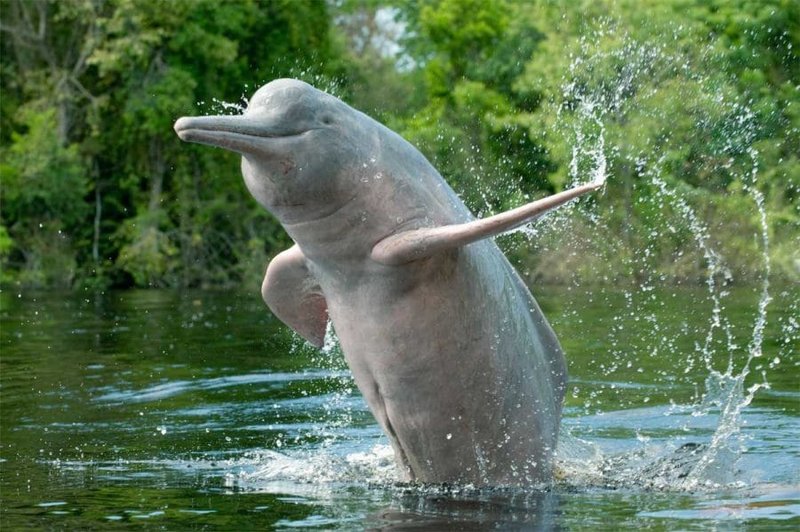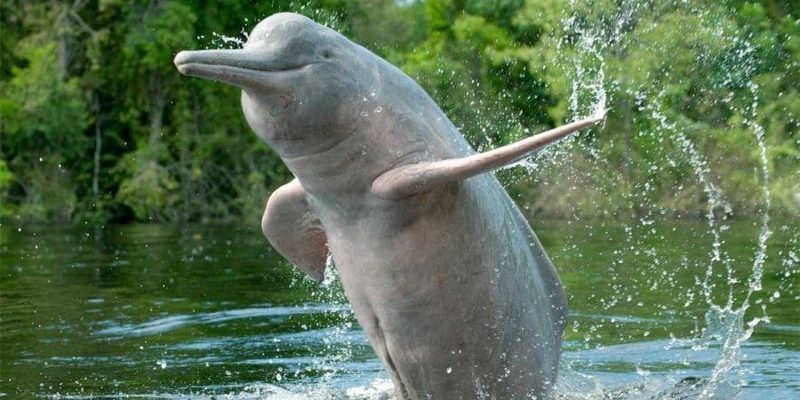
The Amazon River dolphin is not just any dolphin; it’s one of the few species that adapted to life in freshwater environments. Picture a river flowing through lush green jungles filled with exotic wildlife. This is the home of the Amazon river dolphin—a place where the waters teem with life, and these dolphins have adapted to their surroundings in remarkable ways. Let’s dive deeper into where exactly they’re found, their habitats, and the overall significance of their presence in these waterways.
The Range of the Amazon River Dolphin
The Amazon river dolphin is primarily found in the Amazon River and its tributaries. This river system stretches across several countries in South America, including Brazil, Peru, Colombia, Venezuela, Ecuador, and Bolivia. Imagine a sprawling network of rivers that act as a lifeline for both people and wildlife. These dolphins are well-suited for these environments, and it’s common to find them in slow-moving waters and flooded forests.
Interestingly, the Amazon river dolphin’s range varies with the seasons. In the rainy season, the rivers expand, flooding the surrounding areas and creating new habitats. You might be wondering how this impacts the dolphins. Well, during this time, they can venture into newly submerged areas where they find abundant food, like fish, crustaceans, and even turtles. It’s like they’re swimming through a gigantic buffet!
Habitats of the Amazon River Dolphin
In their natural environment, Amazon river dolphins prefer habitats that are rich in vegetation. They’re often spotted in oxbow lakes, flooded forests, and shallow rivers. These areas not only provide food but also offer protection from predators. Picture a cozy nook filled with greenery—this is the type of place where these dolphins can comfortably hunt and socialize.
Their habitats are incredibly diverse, ranging from calm backwaters to swift river channels. The dolphins thrive in murky waters and can often be seen swimming near the surface, breaking the water with their distinctive pink fins. This color can be quite striking! It can change from gray to bright pink, especially during mating season or when they’re excited. It’s almost like they’re wearing their emotions on their skin.
But let’s not forget the impact of human activity. Deforestation, pollution, and river damming can disrupt these delicate habitats. When the balance is disturbed, it can threaten the dolphins’ food sources and overall health. Here’s the thing: preserving their habitats is crucial for their survival.
What Makes the Amazon River Dolphin Unique?
The Amazon river dolphin has some fascinating characteristics that set it apart from its ocean-dwelling cousins. For one, they have a flexible neck, allowing for greater maneuverability in tight spots, like river bends and flooded forests. This is unlike other species of dolphins that have a more rigid neck structure. Think of it like being able to twist and turn effortlessly through a crowded room!
Another intriguing feature is their coloration. While most dolphins are shades of gray, Amazon river dolphins can appear pink, especially the males. The color comes from a combination of genetics and blood vessel expansion when they’re excited. It’s like a permanent splash of personality!
Their social structure is also fascinating. These dolphins are known to be quite social and often live in smaller groups, unlike some ocean dolphins that form large pods. They communicate using a range of clicks and whistles, which helps them navigate through murky waters and coordinate hunts. It’s a bit like having your own secret language!
Feeding Habits and Diet
Speaking of hunting, let’s chat about what Amazon river dolphins eat. Their diet mainly consists of fish, but they’re also known to munch on crustaceans and other aquatic creatures. They have developed some fascinating hunting techniques to catch their meals, relying more on echolocation than on sight, especially in murky waters. This skill is pretty incredible—it’s like having a built-in sonar system that helps them “see” their surroundings!
During the rainy season, their diet can diversify—a boon for these adaptable mammals. They often take advantage of the seasonal influx of prey. Imagine being at an all-you-can-eat fish buffet in the middle of the rainforest; there’s no shortage of food during this time!
However, with pollution and overfishing threatening their prey, it’s important that we consider how our actions impact their feeding grounds. Sustainable fishing and pollution control are vital to ensuring that these unique dolphins continue to thrive in their habitats.
Conservation Status and Threats
Sadly, the Amazon river dolphin faces several threats that put its population at risk. They are currently classified as vulnerable due to habitat destruction, pollution, and accidental deaths in fishing nets. It’s a shame because these creatures play a crucial role in the ecosystem of the Amazon River. If their population continues to decline, it could have serious consequences for the river’s overall health.
One of the main challenges is the impact of water pollution from agricultural runoff and urban development. This can lead to toxic environments for both the dolphins and their prey. In some areas, they are also hunted for their meat, which is used as bait in fishing. It can feel frustrating to realize that these beautiful creatures are often caught in the crossfire of human activity.
Conservation efforts are underway to protect these dolphins and their habitats. Many organizations are working to raise awareness about their plight and advocate for cleaner rivers and responsible fishing practices. You might be wondering how you can help—supporting these initiatives or advocating for stronger environmental policies can make a difference!
The Role of the Amazon River Dolphin in the Ecosystem
Amazon river dolphins serve a vital function in their ecosystem. As top predators, they help maintain the balance of fish populations, ensuring healthier waterways. Their hunting habits prevent any one species from dominating the ecosystem, which benefits the entire biodiversity of the Amazon.
These dolphins also contribute to the food web by providing nutrients through their waste. It’s interesting to think that something as simple as where and how they go about their day can have such a ripple effect on the environment. If the dolphins thrive, the health of the entire river system improves.
Let me explain: a healthy ecosystem supports a diversity of life, from the tiniest fish to the largest animals. Protecting the Amazon river dolphin means protecting the ecological balance of the Amazon River itself.
How You Can Help Protect These Unique Dolphins
If you’re inspired to support the Amazon river dolphin and its habitat, there are several steps you can take:
- Raise Awareness: Share information about the Amazon river dolphin and its challenges via social media or community events.
- Support Conservation Organizations: Donating to groups focused on river conservation and wildlife protection can directly impact these dolphins’ survival.
- Practice Sustainable Living: Reduce your use of plastics and chemicals that can end up in waterways, and advocate for cleaner rivers.
- Visit Responsibly: If you travel to the Amazon, choose eco-friendly tourism options that support conservation efforts.
Every small action counts! Whether it’s educating yourself or contributing to a cause, you’re part of the bigger picture.
In conclusion, the Amazon river dolphin is not just a fascinating creature but a vital part of the Amazon River ecosystem. From their unique adaptations to their changing habitats, these dolphins face challenges that need our attention. By understanding where they are found and the threats they encounter, we can all play a role in protecting them for future generations. So, let’s make it a point to keep these rivers and their inhabitants healthy and thriving!

